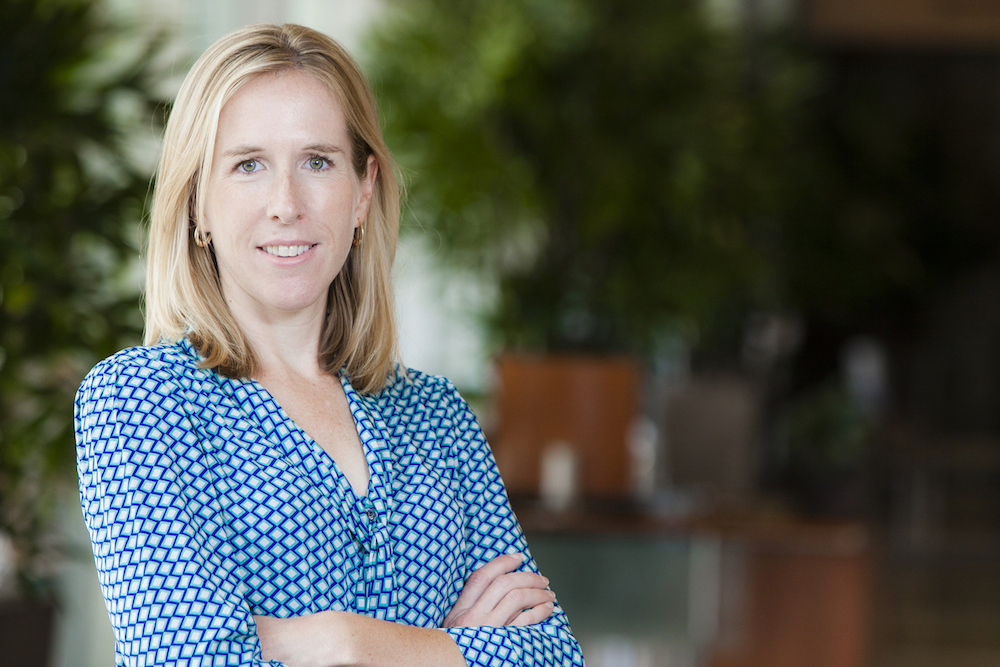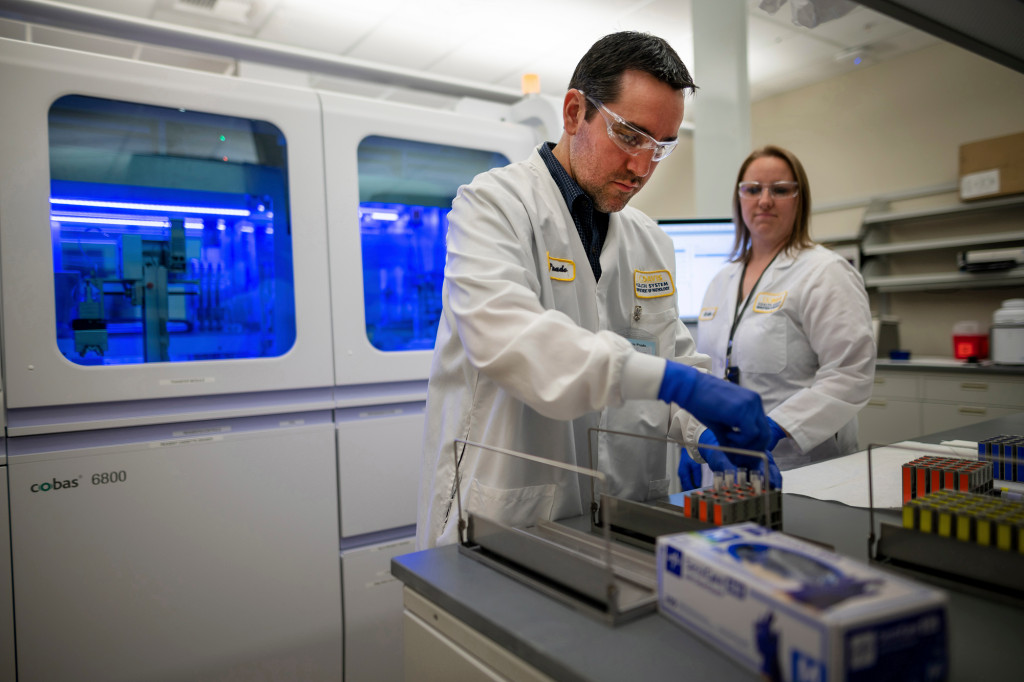Daily Business Report-June 4, 2020
On April 3, General Atomics Aeronautical Systems Inc. flew its SkyGuardian Remotely Piloted Aircraft in the skies above Southern California as part of a joint flight demonstration with NASA. (General Atomics photo)
Voice of San Diego sues FAA to learn more
about drone test project hitting San Diego skies
By Jesse Marx | Voice of San Diego
In 2014, a U.S. Customs and Border Protection drone experiencing a mechanical failure was deliberately drowned in the ocean off San Diego.
The unmanned aircraft didn’t have enough battery to go all the way back to Arizona, so the ground crew steering it chose the water as the safest recovery site. But for approximately two minutes, the pilot lost contact. By the time the drone crashed, it was headed back in the direction of Point Loma.
The federal agents who recovered the wreckage suffered minor injuries due to inhalation and exposure to jet fuel and lacerations from handling carbon fiber shards without proper equipment.
In the nine months leading up to the San Diego crash, according to a subsequent CBP report, similar drones produced by the same local defense contractor, General Atomics, failed 18 times due to problems with the starter-generator.
The company is now developing a new military-grade drone, known as the SkyGuardian, with plans to market the unmanned aircrafts to police and other emergency responders as well as public planners. But first the company needs to prove that the device is safe to put above a densely populated metro — and it’s chosen San Diego as the prospective test site.
The Federal Aviation Administration is responsible for granting that permission, but it has declined to say more about the process and is dragging its feet on internal records that might show how regulators are thinking about the SkyGuardian in light of past drone crashes.
That’s why Voice of San Diego is suing the public agency.
If the SkyGuardian, which spans 79 feet across its wings and weighs up to 12,500 pounds, successfully flies above the city, it will set major precedent in the United States. It will literally open civilian airspace to new commercial uses and new forms of surveillance — what the company itself has dubbed a “persistent eye in the sky.”
______________________________
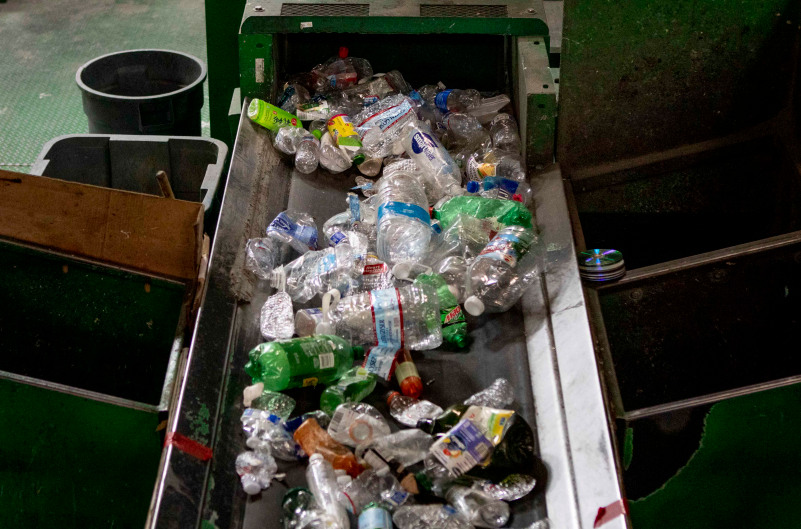
With one California recycling bill already dead,
will this be the year the state tackles its waste crisis?
By Rachel Becker | CalMatters
Even the special interests that helped kill a California Senate bill aimed at reforming beverage bottle recycling say the state needs to fix its broken system. And one lawmaker who voted no on the bill says he might just introduce his own.
Authored by Democratic state Sen. Bob Wieckowski of Fremont, the Beverage Container Recycling Act of 2020 would have required beverage distributors to design a new recycling program — and to help pay for it themselves. But the bill failed a critical juncture after it fell four votes short of passage.
Wieckowski’s bill was one of a handful aimed at addressing two major problems plaguing California’s recycling industry. One is the turmoil in global recycling markets that kicked off when China decided to stop importing much of the world’s waste. The second is the home-grown death of California’s bottle recycling businesses.
That’s the one Wieckowski’s bill aimed to fix. “My hope was to reshape the recycling industry in California so that we have a system that makes it convenient for consumers,” Wieckowski said. “No one — in California or outside California — thinks that the current system in California is working.”
Special interests and legislators instead are focusing on a set of identical bills collectively called the California Circular Economy and Pollution Reduction Act. The Act aims to curb waste from single-use packaging and food service items like containers, forks, and stirrers that Californians use once, and then toss.
Spearheaded by Democratic lawmakers Sen. Ben Allen from Santa Monica and Assemblywoman Lorena Gonzalez of San Diego, the effort calls for cutting three-quarters of the waste from these single-use products in the next ten years. It also requires manufacturers to make such items 100 percent compostable or recyclable starting in 2030.
______________________________
Scripps Health launches continuous
glucose monitoring in hospitals
Scripps Health has launched an innovative program that uses remote continuous glucose monitoring (CGM) on COVID-19 patients at Scripps Mercy Hospital San Diego who require regular management of diabetes or other blood-sugar conditions.
Scripps will roll out the Dexcom G6 CGM system over the next few months at several of its other hospital campuses not only for hospitalized diabetes patients with the new coronavirus but also for any other inpatients with elevated blood sugar requiring insulin. The system greatly reduces the traditional finger sticks that nurses more typically do to check glucose levels.
The program was made possible by a recent decision by the Food and Drug Administration (FDA) to allow the devices to be used in hospitals during the pandemic as a way to reduce the number of times a nurse has to go into a COVID-19 patient’s room, which in turn should conserve more of the personal protective equipment needed to prevent the spread of infection.
______________________________
Visualizing layoffs at prominent
startups triggered by COVID-19
Today’s snapshot shows some of the tech names that have been hit hardest by the pandemic.
As the pandemic reverberates through almost every industry imaginable, tech startups are also feeling the pain.
Since mid-March, countless startups and unicorns have undergone layoffs.
Today’s infographic pulls data from Layoffs.fyi, and navigates the cascading layoffs across 30 of the most recognizable startups in America. Each of the companies have slashed over 250 employees between March 11 and May 26, 2020—capturing a snapshot of the continuing fallout of COVID-19.
Silicon Valley Takes a Hit
Unsurprisingly, many of the hardest hit startups are related to the travel and mobility industry.
Closing 45 offices, Uber has laid off 6,700 employees since mid-March. Uber CEO Dara Khosrowshahi, who was granted a $45 million earnings package in 2018, announced he will also waive his $1million base salary for the remainder of the year.
Click here to view the snapshot
______________________________
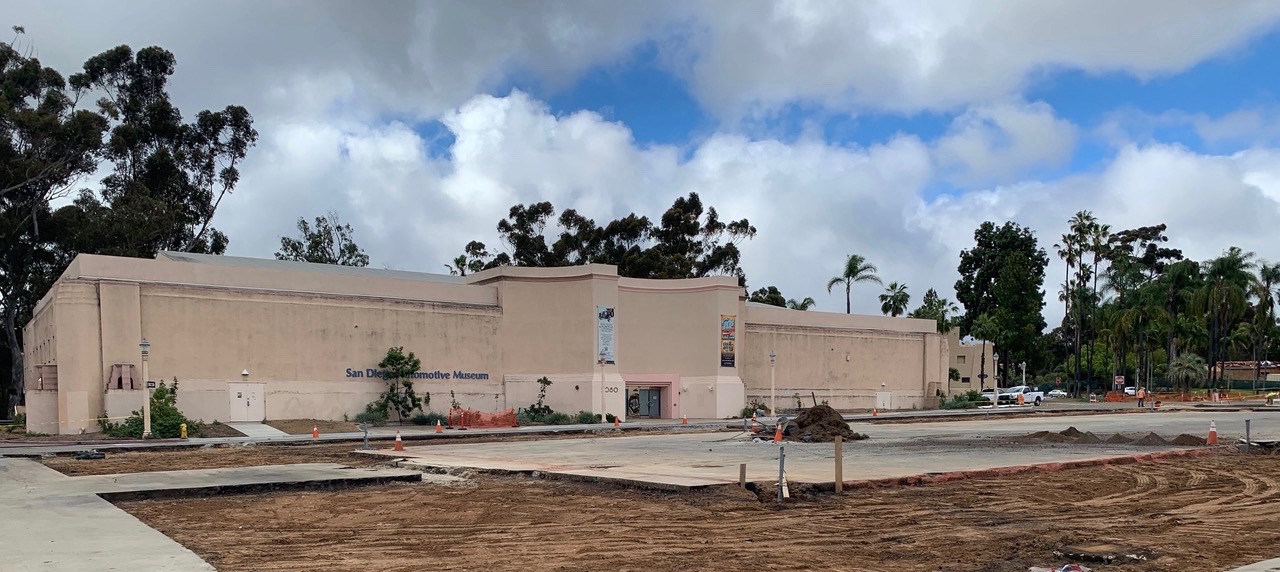
Restoration begins at Balboa Park’s Auto Museum
Committee of 100 steps up
A historically accurate repainting of Balboa Park’s historic Automotive Museum Building is kicking of a long-awaited $500,000 restoration of the historic building by the Committee of 100.
The park’s oldest support group, C100 has donated more than $15,000 worth of paint and materials for city crews to apply to the 85-year-old building in the Palisades area, south of the Spreckels Organ Pavilion.
C100 has raised additional funds to recreate four elaborate murals that graced the entrance to what was originally the California State Building. It was built for the 1935-36 California Pacific International Exposition, San Diego’s second world’s fair.
Also coming are recreations of Central American-inspired ornamental features and two statues of California grizzly bears, resembling those that peered over Pan-American Plaza from the roof in 1935.
The work is expected to be completed by Labor Day.
“At this time of severe budget shortfalls, generous donors have made it possible for the Committee of 100 to help the city bring this key building back to its original, stately look,” said C100 President Roger Showley.
The city previously removed several invasive trees that were undermining the two-story, 35,000-square-foot building and is currently turning the southern half of the plaza into a pedestrian-only space with replacement parking spaces created elsewhere in the park.
Once the Auto Museum restoration is completed, C100 intends to turn next to the Municipal Gym and restore the artistic features of what was originally the Palace of Electricity and Varied Industries.
The final projects, with city approval, will be the recreation of the dramatic Firestone Singing Fountains in the center of Pan-American Plaza and the completion of the northern half of Pan-American Plaza to pedestrian-only use. Replacement parking also is being explored.
______________________________

Quarantined artists hope painted
rocks lift finders’ heavy burdens
Escondido native Ceci Lusky has been painting and hiding rocks for years, but this spring she painted a series of rocks for her daughter, Allison Lusky Reue, and some of Allison’s college friends. Reue would have graduated Saturday with her master’s degree in nursing from the University of San Diego, but the commencement was canceled due to the pandemic.
So to honor the hard work and sacrifices of her daughter and her fellow graduating nurses, Lusky painted a series of rocks depicting nurses wearing surgical face masks and caps. She said she painted them “because nurses rock,” particularly right now as front-line health-care workers.
“She worked so hard to do this and even if we can’t have a graduation celebration for her (Saturday) … we’ll make the best of it,” said Lusky, who is board chair for the Escondido Community Child Development Center.
______________________________
The Urgent Need for Safety Guidance Within 6 Feet
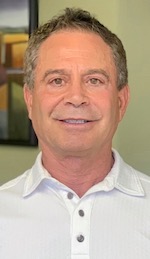
Research shows that exposure to the COVID-19 virus over time creates increased risk. This is been amplified in outbreaks at food packaging plants, restaurants, and senior care facilities to name a few.
Tony Madureira is a professional mold remediator who has been protecting his employees from mold, which has the same .3-micron particles as the virus, for about 15 years with no incidents.
Madureira asserts the scientific-based recommendations for mold by professional hygienists hold the key to his success rate within the six-foot infection zone and cautions businesses and employees need guidance within that zone in order to realize greater safety outcomes.
“The public has been provided numerous documents with workplace guidelines from OSHA and the CDC, but they don’t offer enough guidance for workers who operate in the less than a six-foot bubble,” said Madureira, founder of Back to Work After COVID. “Even the State of California’s Workplace Specific Plan by industry states the importance of social distancing, but it doesn’t address what employers need to do to keep their employers safe within six-feet. We started this public awareness campaign so business, community and local government leaders can become aware of the gap in guidance and get the critical information that is absent from current credible resources. California represents the country’s largest state economy. If we’re going to lead in the comeback, we cannot ignore this critical, identified risk.”
Back to Work After COVID invites employers and employees to access infectious zone demonstrations, education and business strategies to help them operate safely in the six-foot environment. Click here to access


